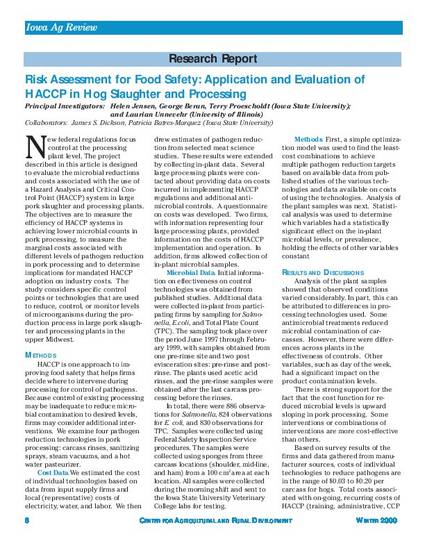
Article
Risk Assessment for Food Safety: Application and Evaluation of HACCP in Hog Slaughter and Processing
Iowa Ag Review
Disciplines
Abstract
New federal regulations focus control at the processing plant level. The project described in this article is designed to evaluate the microbial reductions and costs associated with the use of a Hazard Analysis and Critical Control Point (HACCP) system in large pork slaughter and processing plants. The objectives are to measure the efficiency of HACCP systems in achieving lower microbial counts in pork processing, to measure the marginal costs associated with different levels of pathogen reduction in pork processing and to determine implications for mandated HACCP adoption on industry costs. The study considers specific control points or technologies that are used to reduce, control, or monitor levels of microorganisms during the production process in large pork slaughter and processing plants in the upper Midwest.
Citation Information
Helen H Jensen, George W. Beran, Terry Proescholdt, Laurian Unnevehr, et al.. "Risk Assessment for Food Safety: Application and Evaluation of HACCP in Hog Slaughter and Processing" Available at: http://works.bepress.com/helen-jensen/81/
